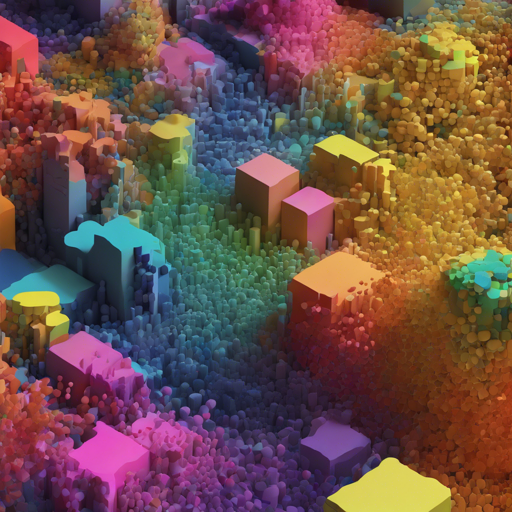Welcome to your guide on generating 3D point clouds using the revolutionary PointFlow framework! With the growing importance of 3D data in vision and graphics applications, PointFlow provides a robust and innovative method for synthesizing high-resolution and high-fidelity point clouds.
Introduction to PointFlow
PointFlow is grounded in a probabilistic framework where 3D point clouds are modeled as distributions of distributions. This allows for the sampling of shapes and the generation of an arbitrary number of points from those shapes.
Setting Up Your Environment
Before diving into the generation process, let’s prepare our environment. Below are the dependencies you need along with installation instructions:
- Python 3.6
- CUDA 10.0
- G++ or GCC 5
- PyTorch (tested with version 1.0.1)
- torchdiffeq
- (Optional) Tensorboard for visualization
Installation Steps
Follow these commands to set up your environment:
bash
# Create a new conda environment
conda env create -f env.yaml
conda activate PointFlow
# Compile structural losses (not required if using a compatible version of EMDCD)
# Install necessary packages
./install.sh
Dataset Preparation
The modeling requires point clouds uniformly sampled from ShapeNetCore dataset (version 2). Download it using the following link:
ShapeNet Point Cloud DownloadAfter downloading, move the point cloud dataset to your data directory:
bash
mv ShapeNetCore.v2.PC15k.zip data
cd data
unzip ShapeNetCore.v2.PC15k.zip
Training Your Model
Once the dataset is ready, you can train your models using the provided scripts. Here’s how:
- To train an auto-encoder (without latent CNF):
bash ./scripts/shapenet_airplane_ae.sh - To train the generative model:
bash ./scripts/shapenet_airplane_gen.sh
Understanding the Code: A Creative Analogy
Imagine creating a magnificent garden (a 3D point cloud) from an intricate blueprint (the underlying model). The steps to cultivate this garden can be visualized as:
- Blueprint Design (Modeling): You start with an abstract idea of what your garden will look like—this is akin to creating the probabilistic distributions in PointFlow that define different shapes.
- Seed Selection (Data Preparation): You pick specific flowers and plants (point clouds) from a nursery (ShapeNet dataset) that you think will beautify your garden, representing the dataset preparation.
- Garden Layout (Training): Now, it’s time to position your plants according to your blueprint while ensuring they flourish—similar to training the model to generate point clouds that closely embody the distributions of shapes you’ve laid out.
- Regular Care (Evaluation): Keep tending to your garden, evaluating how well plants grow and adjusting accordingly—this mirrors evaluating your model’s performance with pre-trained algorithms.
Troubleshooting Tips
If you encounter any issues during setup or training, consider the following troubleshooting tips:
- Incorrect Dependencies: Ensure all the dependencies are correctly installed, particularly the PyTorch version. Execute
conda listto verify. - CUDA Issues: If you face problems with CUDA, confirm that you have the correct version installed for your GPU. Compatibility is key!
- Performance Issues: For models that require substantial GPU memory, consider reducing batch sizes or utilizing a more efficient model architecture.
For more insights, updates, or to collaborate on AI development projects, stay connected with fxis.ai.
Conclusion
With the foundations laid and steps outlined, you’re equipped to start generating 3D point clouds using PointFlow. By following these instructions, you can harness the power of deep learning to create stunning and realistic 3D environments.
At fxis.ai, we believe that such advancements are crucial for the future of AI, as they enable more comprehensive and effective solutions. Our team is continually exploring new methodologies to push the envelope in artificial intelligence, ensuring that our clients benefit from the latest technological innovations.

